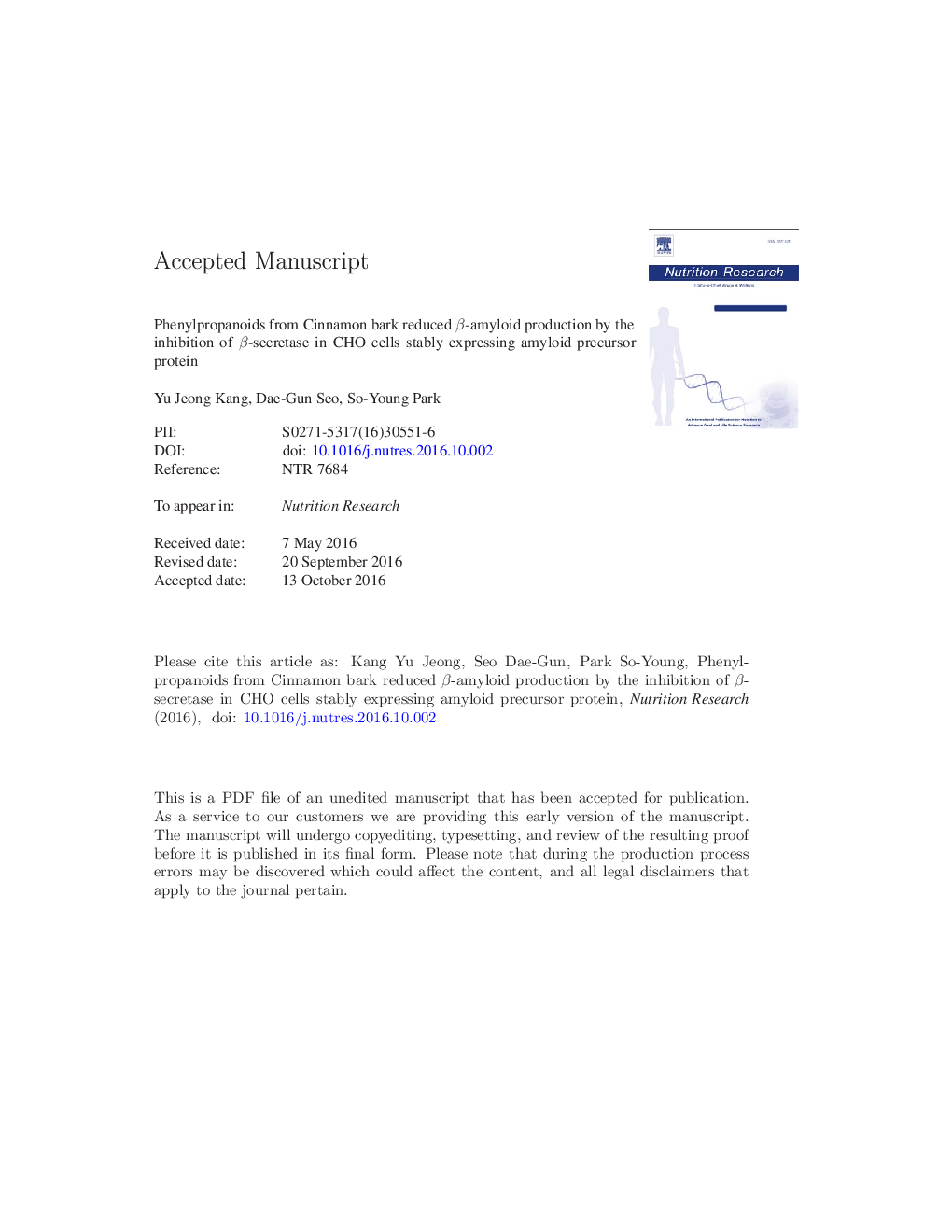| Article ID | Journal | Published Year | Pages | File Type |
|---|---|---|---|---|
| 5588656 | Nutrition Research | 2016 | 28 Pages |
Abstract
β-Amyloid (Aβ) is a substance of Alzheimer disease (AD), which is generated via the amyloidogenic pathway from amyloid precursor protein (APP) by β-secretase and γ-secretase. Inhibition of Aβ production is a potential therapeutic approach to AD. Thus, we tested the hypothesis that cinnamon bark (Cinnamomi Cortex Spissus), the dried bark of Cinnamomum cassia Blume (Lauraceae), and its constituents are beneficial to AD. The methanol extract of cinnamon bark efficiently reduced Aβ40 production in Chinese hamster ovarian (CHO) cells stably expressing APP as determined by enzyme-linked immunosorbent assay. Bioassay-guided isolation of cinnamon bark extract was carried out using open column chromatography and high-performance liquid chromatography, and the following 6 phenylpropanoids were isolated: syringaresinol (1); medioresinol (2); coumarin (3); 2-hydroxycinnamaldehyde (4); cryptamygin A (5); and 3â²,5,7-trimethoxy epicatechin (6). Among these, 4 μg/mL medioresinol and cryptamygin A reduced Aβ40 production by 50% and 60%, respectively, compared with dimethyl sulfoxide-treated control cells. The IC50 values of medioresinol and cryptamygin A for the inhibition of Aβ40 production were 10.8 and 8.2 μg/mL, respectively. Furthermore, treatment of APP-CHO cells with either compound decreased the amount of β-secretase and sAPPβ (the proteolytic fragment of APP catalyzed by β-secretase). These results suggest that the antiamyloidogenic activity of cinnamon bark extract was exerted by medioresinol and cryptamygin A via a reduction in the amount of β-secretase. The extract of cinnamon bark contains potentially valuable antiamyloidogenic agents for the prevention and treatment of AD.
Keywords
BuOHβ-secretaseEtOAcAPPACNnuclear magnetic resonance3-(4,5-dimethylthiazol-2-yl)-2,5-diphenyl-tetrazolium bromideAβ40Cinnamomum cassiaDMSOMTTn-Hexaneβ-AmyloidEthyl acetateAcetonitrileChoButanolAlzheimer diseaseChinese Hamster OvaryELISAEnzyme-linked immunosorbent assayNMRDimethyl sulfoxideMethanolMeOHHexamyloid precursor proteinhigh-performance liquid chromatographyHPLC
Related Topics
Life Sciences
Biochemistry, Genetics and Molecular Biology
Endocrinology
Authors
Yu Jeong Kang, Dae-Gun Seo, So-Young Park,
